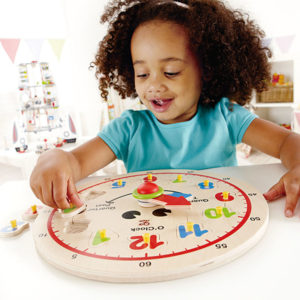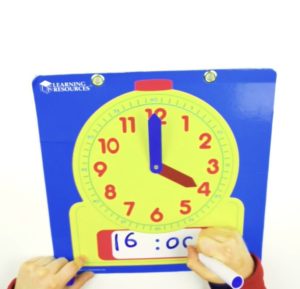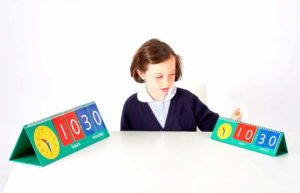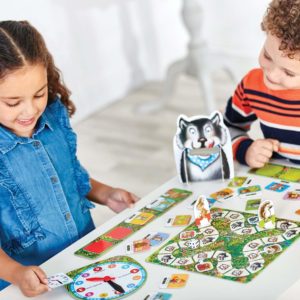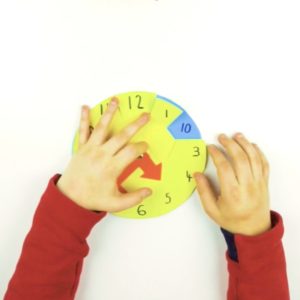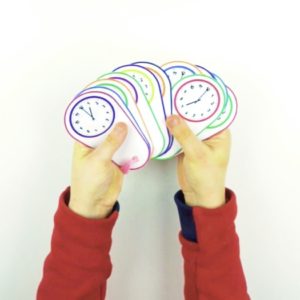No products in the cart.
7 Kids Telling Time Games and Resources
January 16, 2020
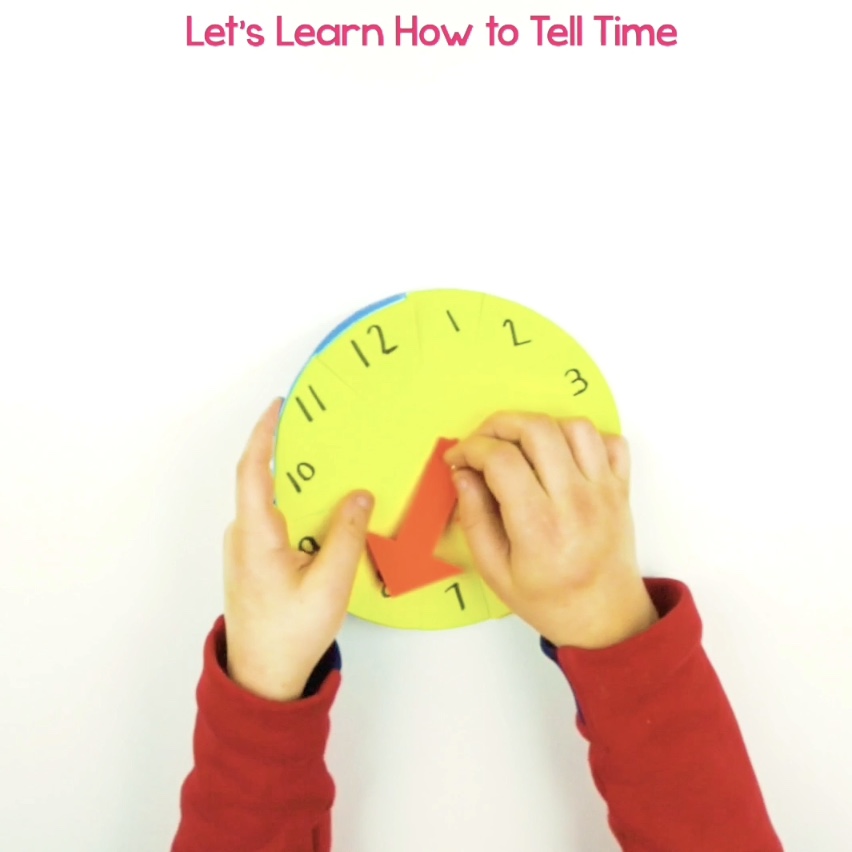
What time is it, Mr. Wolf? From childhood telling time games to demonstration clocks, learning to tell the time can be fun. Not to mention, telling the time is a vital skill integrated into many aspects of daily life. If you are teaching telling time and searching for free telling time worksheets, games and learning resources, check out our video above with 4 interesting activities. Read about more learning tips for kids telling time below.
1. Early Years Resources: Learning Clocks
When practicing telling the time, learning clocks help children to learn about time in a visual, hands-on way. With such learning resources, children from as young as two years old can begin to develop an understanding of time. Early years resources like Santoys Sensory Clock encourage time telling through touch and are suitable for toddlers. Around the edge of the clock are removable colourful number pots with textured surfaces. Chunky, movable hands introduce little ones to the concepts of time. Moreover, Hape Learning Clock is an eco toy with a twist. In addition to teaching kids to tell time, this brilliant clock contains numbered puzzle pieces and develops time vocabulary, such as “quarter to” and “half past”. For children above three, these TickiT ColourBright sand timers – ranging from 30 seconds to 30 minutes – are ideal for developing time-awareness, turning an abstract concept into something more concrete.
2. Wipe-Clean Interactive Teaching Clocks
Are you a teacher or home educator? Wipe-clean learning clocks are wonderful primary teaching resources for children of all ages. Interactive teaching clocks can be used by teachers and pupils when teaching telling time. This wipe-clean demonstration clock is perfect for teaching telling time as it provides the opportunity to display both analogue and digital time. These interactive teaching clocks are also available in a set here and are excellent for introducing the concept of time to primary learners.
3. Digital Time Learning Resources
Once children have mastered the skill of analogue time, they can discover digital time, which aids your child’s understanding of the 24-hour clock. Beneficial learning resources such as this freestanding flip-chart incorporate both analogue and digital time and 12 and 24 hour time. With movable, colour coded hands and corresponding digital numbers, this flipchart clock makes it easy for children to coordinate time. Little ones will also enjoy playing primary resources maths kids learning toys like Tock the Learning Clock, a cute robot who announces the time. Tock can be used as both a learning resource with quiz functions in addition to a night light and telling children when it is okay to get out of bed in the morning.

4. Telling Time Activity Books
When looking for telling time books for kids, where should you start? Begin with wipe-clean time activity books, where the basics of telling the time are explained by a hoard of friendly monsters. Plus, the wipe-clean nature of the book allows for activities to be repeated over and over again. Next, take a look at lift-the-flap Telling the Time, a fantastic interactive book with over 125 flaps to lift. Along with such features, there is even a page where kids can make their own clock with moving hands! Moreover, primary resources maths workbooks such as Schofield and Sims Telling the Time breaks down time into manageable sections for learners.
5. Telling Time Games
What better way to reinforce learning about time than with engaging games? At WordUnited, we believe that learning and playing can be one. For conscientious parents looking for a game that is both educational and fun, Orchard Toys What’s the Time, Mr. Wolf? board game teaches both analogue and digital time. Additionally, why not try playing Telling Time Dominoes? With teams of 2-4 players, children learn valuable social skills such as turn taking whilst developing their knowledge of 12 and 24 hour time. Kids learning toys such as this Playmobil Schoolhouse with moveable clock hands are great for playtime. Alternatively, browse BBC Bitesize time for online learning resources; the online games encourage interactive learning and children can check their answers independently. For teaching telling time, you may also be interested in this online teaching clock.
6. Telling Time Crafts
Feeling crafty? Children can create their very own DIY learning clock to understand the minutes represented by each number on a clock, using four simple resources: coloured card, scissors, pens and a split pin. Watch the above video for a step-by-step tutorial. Use for school or home education as a primary teaching resource with children aged 5 years and above. Children can lift the flaps and move the hands round on the clock, embedding a deeper understanding of how time works.
7. Free Telling Time Worksheets and Resources
For free telling time worksheets, check out our growing Free Resources Hub. Packed with resources for all areas of the National Curriculum, simply download for free and print from any device. If it’s analogue clock worksheets you are looking for, try these colourful analogue fans. Print, laminate and cut out to create DIY time fans that can be used again and again as primary teaching resources or games for students. Kids learning about 24-hour time? Take a look at digital time worksheets like this.
Discover even more telling time games and kids learning toys at wordunited.com!



 01782 698558
01782 698558


